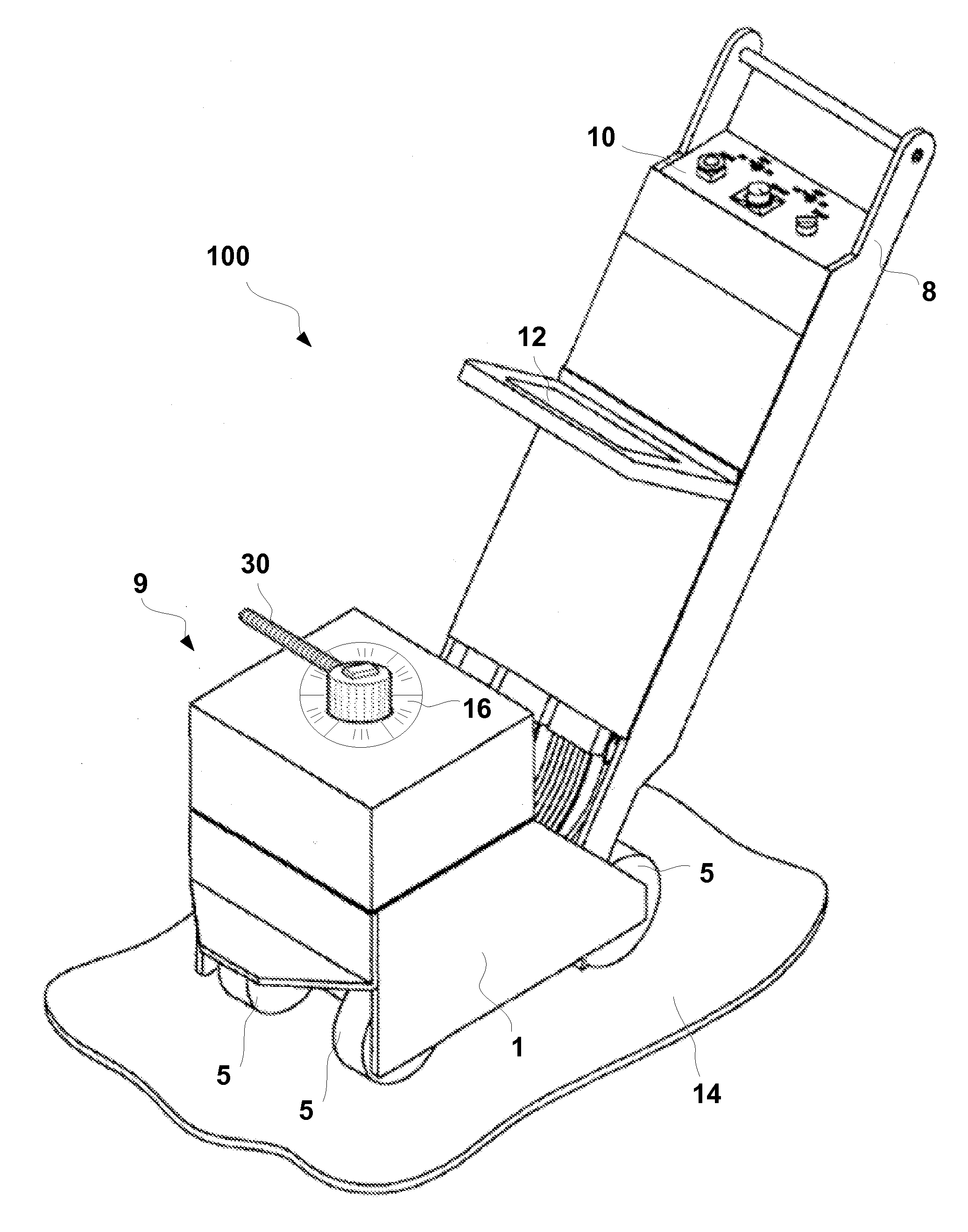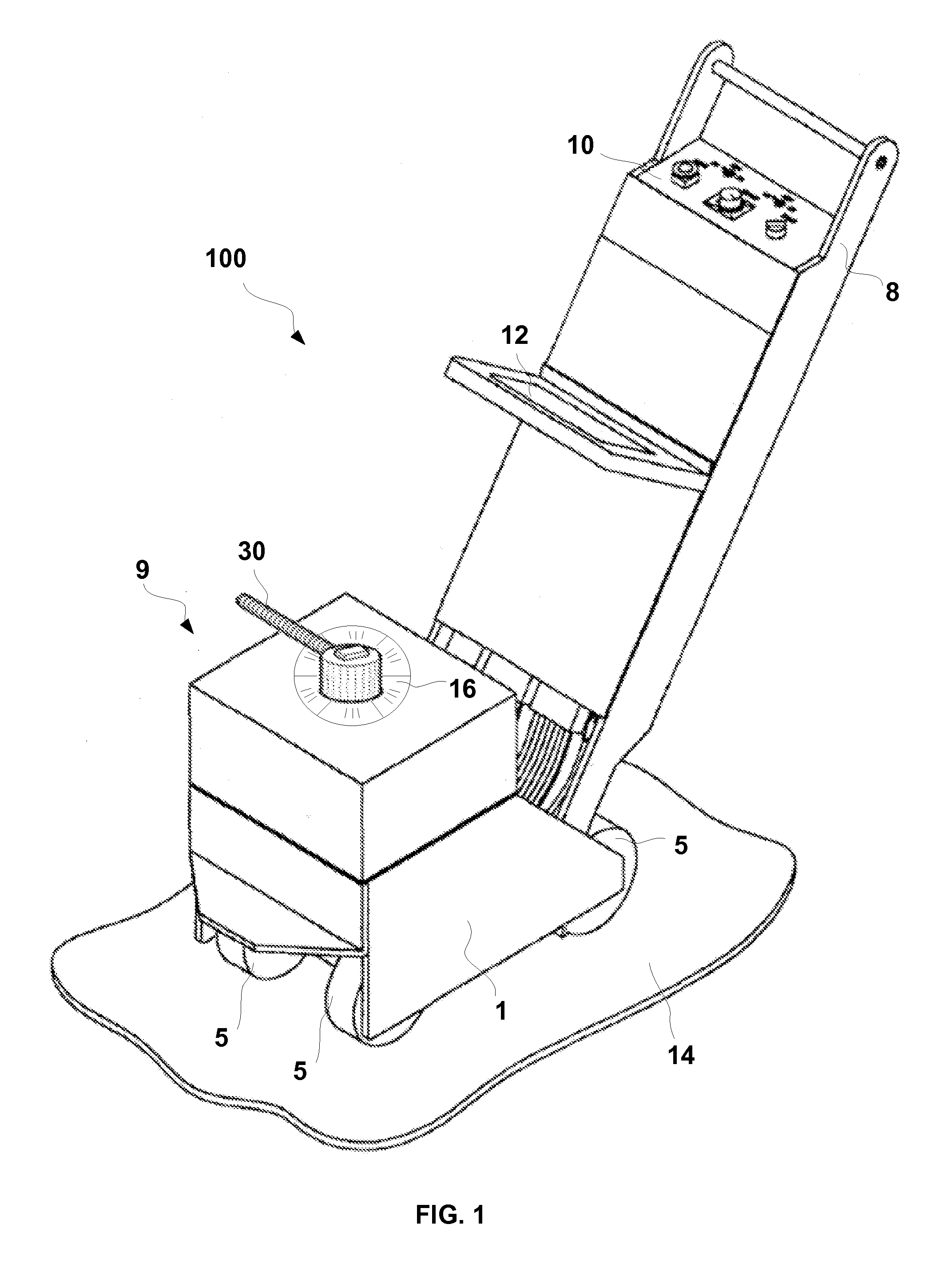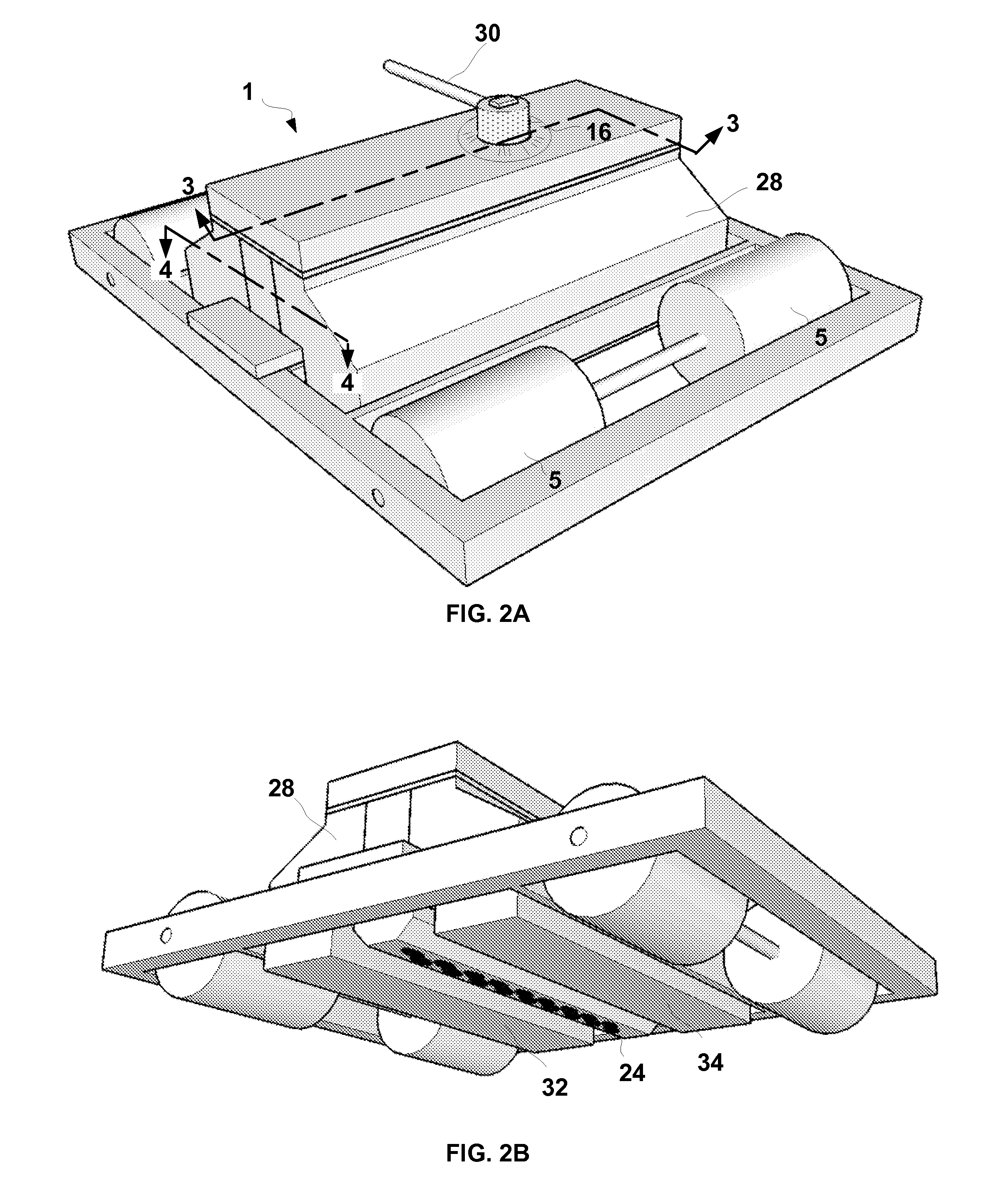Magnetic flux leakage inspection device
- Summary
- Abstract
- Description
- Claims
- Application Information
AI Technical Summary
Benefits of technology
Problems solved by technology
Method used
Image
Examples
Embodiment Construction
[0031]Referring to FIG. 1, one embodiment (embodiment A) of a magnetic flux leakage inspection device 100 according to the present invention is shown. The device includes an inspection carriage assembly 9 mounted on wheels 5 and a handle portion 8 by which an operator steers and manipulates the device. Preferrably mouted on handle portion 8 are a control panel 10 for controlling the operation of the device and an interface screen 12 for displaying inspection results and serving as an interface for the operator communicating with the device. The device is shown positioned on a portion of a test object 14, which is under inspection. Test object 14 is composed of a magnetizable material and for the case of storage tank bottoms, it is generally a ferromagnetic steel plate.
[0032]A novel aspect of device 100 representing a significant improvement to the existing magnetic flux leakage inspection devices is that device 100 comprises a scan bar assembly 1 containing a plurality of magnets, t...
PUM
 Login to View More
Login to View More Abstract
Description
Claims
Application Information
 Login to View More
Login to View More - R&D
- Intellectual Property
- Life Sciences
- Materials
- Tech Scout
- Unparalleled Data Quality
- Higher Quality Content
- 60% Fewer Hallucinations
Browse by: Latest US Patents, China's latest patents, Technical Efficacy Thesaurus, Application Domain, Technology Topic, Popular Technical Reports.
© 2025 PatSnap. All rights reserved.Legal|Privacy policy|Modern Slavery Act Transparency Statement|Sitemap|About US| Contact US: help@patsnap.com



